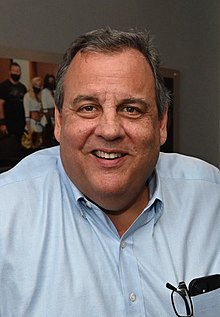“Foe’s setting is supposed to be the Midwest in 2065. Information projected on the screen tells us that the planet’s climate is growing worse as mankind continues to pollute and ruin the air and water. The government, like Elon Musk, is intent on using space as a safety valve for humans to flee our ruined Earth. Once we completely ruin our home planet, humans will be relocated to suitable locales. The husband of this couple is being recruited to go for a year. (Why?)
A representative of the government, Terrence (Aaron Pierre), comes to the couple’s remote farm home to inform them that the husband, Junior, has been selected to live aboard a government-built space station for a year. (Why?) While he’s gone, an A.I. Replicant will serve as a companion to Junior’s wife Henrietta. Terrence tells the couple that this is a great opportunity for them. Originally, Terrence says the year-long sabbathical will take place in roughly 2 years.
Terrence leaves, but then he returns in his modernistic DeLorean-like car much sooner.
Terrence returns in just one year. He says that he must live with the couple for a period of months in order to help make the Replicant-to-be-made as authentic as possible. Terrence will be conducting confidential interviews with each of the couple and generally butting into their lives. His presence seems unwelcome and, frankly, unnecessary.
The first impulse that Junior has when their doorbell rings at a very late hour is to grab a gun and shoot. Henrietta talks him out of loading the shotgun; no shots are fired at Terrence. [Perhaps they should have been.]
Junior is not thrilled by Terrence’s news. [I couldn’t help but think of the film we watched just prior to this one where a black family in North Carolina fights for 33 years to be able to stay in their home. Two of the principals in “Silver Dollar Road” go to jail for 8 years, just to be able to remain in the only homes they have ever known. “Foe,” which screened immediately after “Silver Dollar Road,” again presents us with a home-owner who does not want to be rousted from his habitat.]
Junior makes the usual accusations about how he doesn’t want some robot living with his wife while he’s gone. He repeats the usual things about his ties to the land and how he doesn’t think that his wife would like living on an artificial construct launched into space. We, the audience, are less sure of this the more we hear of Henrietta’s angst at the sameness of their lives and how she has always felt “that there’s something else out there for me.”
Farming is already nearly impossible in the Midwest of 2065, however; the bleak picture of the future of the planet certainly seems likely after the weather we’ve all experienced this past summer. The dust storm scene reminded me of the Margot Robbie 2019 film “Dreamland.”
THE GOOD
The scenes depicting the ruined planet are all very cinematic. The lonely tone of the farm and fields is impressive, even if it looks nothing like what I would imagine a ruined Midwest would look like in 2065. We could also say that the couple seem oddly stuck in the past, themselves, with a beat-up pick-up truck and a house that could easily be from the fifties. No flat-screen TVs in evidence and a very old-fashioned look and feel to the entire setting. The acting was top-notch, and I would urge you to check it out on Amazon if you have Amazon Prime and fill me in on the gaps in my interpretation, which are many and numerous.
THE BAD
Problems with the interesting landscape do present themselves to the viewer, however. The couple this film focuses on supposedly live in a remote area that is seeing Dust Bowl-like storms and very little rain. If it’s so remote, why is this huge chicken processing plant where Junior works located in the middle nowhere? And who are the customers that Junior’s wife, Henrietta, is seen waiting on in a fancy restaurant?
I’m an Iowa girl. The landscape looked completely foreign. Dying mucky pink fields and crop circles are not part of my Midwestern experience. Even with the passage of thirty-two years, it’s hard to accept that this is supposed to be the Midwestern United States in 2065. (It is, in fact, Victoria in Australia.)
Two Irish actors (Saoirse Ronan as Henrietta and Paul Mescal as Junior) portray the Midwestern couple on the farm, which is suffering the fate of the entire planet. Based on the book Iain Reid wrote and scripted by Reid and Director Garth Davis (“Lion”), this closing night film at the Nashville Film Festival, is an Amazon/MGM project and set to have a premiere on Amazon on October 6th. ( It premiered at the New York Film Festival and will open in the U.S. on October 6th and in the U.K. on October 20th. The reviews have been somewhat negative, but it is definitely worth a look.)
SPOILER ALERT
The film owes much to “Black Mirror” episodes we have seen before, like the 2013 episode Be Right Back, starring Domhnall Gleeson as an AI facsimile for Hayley Atwell’s late boyfriend. There was a similar one on “Black Mirror” in 2011 entitled “Beyond the Sea” that starred Aaron Paul as an astronaut. And, of course, who can forget the Replicants of “Blade Runner?”
The movie opens with Henrietta (Saiorse Ronan) crying in the shower. She is bemoaning the loss of interest in her that she feels she has seen from her husband of 7 years. (“In the beginning, everything seems so new and exciting until time makes it so predictable.”)
IMHO, Henrietta has made a sort of “deal with the devil” to allow the well-made robot early access to her home and marriage. She is tired of the hum-drum existence with which her husband seems content. She wants to play the piano; Junior makes her play in the basement. She wants to travel and leave this dead place. He does not seem to want to leave his familiar homestead. This seems fairly male, in my own experience, so Henrietta’s angst at her husband’s happiness with the status quo is a motive for her behind-the-scenes collaboration with Terrence to allow the husband substitute to enter her life earlier than we originally think as we watch the film. We only learn it in a climactic scene near the end.
The give-away for “which one is the real robot” is the fact that Henrietta obviously knows Terrence when he comes to their door in the middle of the night. My companion said, “Yes, but isn’t that just because she may have signed them up for the spacecraft because of her desire to leave the farm and get away from the sameness of life?”
Possibly, but the plot seems to give the nod to the wife shacking up with the robot from the get-go and the robot being in house throughout 90% of this movie. (This despite the audience thinking that there will come a later time when the robot will be introduced.) Our thinking is that the robot is “in house” from Scene #One. The ability of a replicant to learn to “love” has been pondered before in other films, and it seems to surface again in this one. (Terrence: “Henrietta didn’t know how this would end. They’ll be studying you for years.”)
A later brief absence on Henrietta’s part caused one of us to feel that Henrietta may have gone off on the spacecraft and sent a Replicant back to live with Junior-the-robot. This could be, although I’ll leave that up to you as you watch this on Amazon.
I think I need to read the book in order to completely understand the symbolism of the bugs and other plot points. Why it is called “Foe” is another good question. I can offer some possible reasons for that title, but it doesn’t seem like the strongest fit.
The acting was good. Saiorse Ronan is good in everything and I looked forward to this film. Paul Mescal was a fine counterpart, but not someone whose work I was familiar with;he rose to fame in England in a television series. Some felt the accents were off. I honestly did not notice any break-through Irish accent problems.
We enjoyed the film. Drop a line and we’ll thrash the plot out together.
“Cast
Saoirse Ronan as Henrietta
Paul Mescal as Junior
Aaron Pierre as Terrence








 As for Miep Gies, the focus of this film, she lived to be almost 101. When the Franks were arrested in August of 1944, possibly turned in by neighbors or by the cleaning person at Otto’s business, Miep Gies and Bep Voskuijl were not arrested. Miep managed to excuse herself by saying she knew nothing of those in hiding. Miep and two others would rescue Anne’s diary before the Nazis cleared out the hiding place. They would eventually return the papers to Otto Frank. Anne’s father would see that Anne’s diary was published (initially as “Diary of a Young Girl”).
As for Miep Gies, the focus of this film, she lived to be almost 101. When the Franks were arrested in August of 1944, possibly turned in by neighbors or by the cleaning person at Otto’s business, Miep Gies and Bep Voskuijl were not arrested. Miep managed to excuse herself by saying she knew nothing of those in hiding. Miep and two others would rescue Anne’s diary before the Nazis cleared out the hiding place. They would eventually return the papers to Otto Frank. Anne’s father would see that Anne’s diary was published (initially as “Diary of a Young Girl”).

 I’m almost caught up from the recently concluded SXSW film festival.
I’m almost caught up from the recently concluded SXSW film festival.



 Lister-Jones acknowledged that she wanted to “use sex as the centerpiece of each episode, to feel like you are inside the sexuality.” Judging from the episodes we saw at this World Premiere, she succeeded. There is a strong emphasis on female empowerment and female pleasure and in pushing the boundaries.
Lister-Jones acknowledged that she wanted to “use sex as the centerpiece of each episode, to feel like you are inside the sexuality.” Judging from the episodes we saw at this World Premiere, she succeeded. There is a strong emphasis on female empowerment and female pleasure and in pushing the boundaries.


 Jesse Plemons (“Breaking Bad”) appeared onstage at the Paramount Theater in Austin, Texas at SXSW with his castmates (Lily Rabe and Elizabeth Olsen) after the March 11th premiere of the first two episodes of the David E. Kelly series “Love & Death.” The series was written by Kelly but directed by Texas-born Leslie Linka Glatter. Plemons was a shadow of his former self, showing off a remarkable weight loss post series.
Jesse Plemons (“Breaking Bad”) appeared onstage at the Paramount Theater in Austin, Texas at SXSW with his castmates (Lily Rabe and Elizabeth Olsen) after the March 11th premiere of the first two episodes of the David E. Kelly series “Love & Death.” The series was written by Kelly but directed by Texas-born Leslie Linka Glatter. Plemons was a shadow of his former self, showing off a remarkable weight loss post series.

